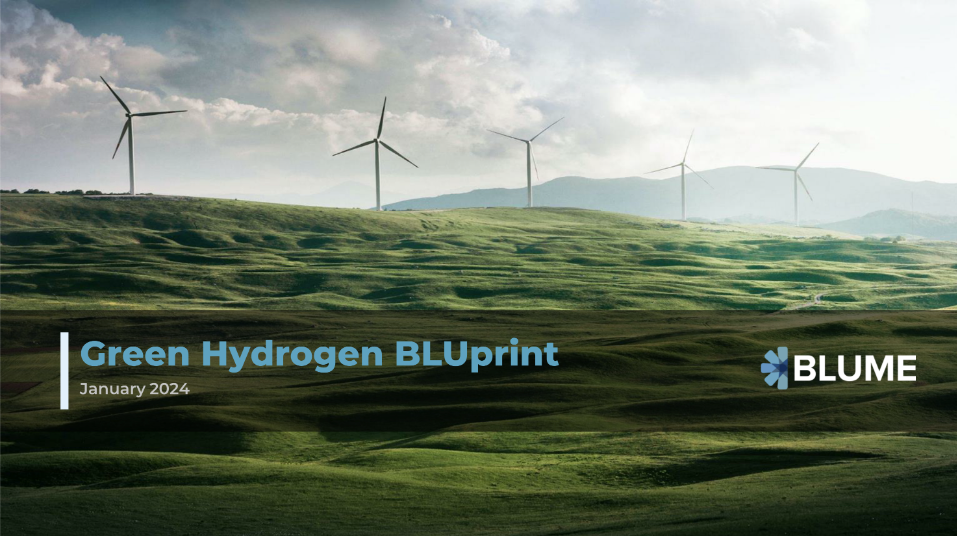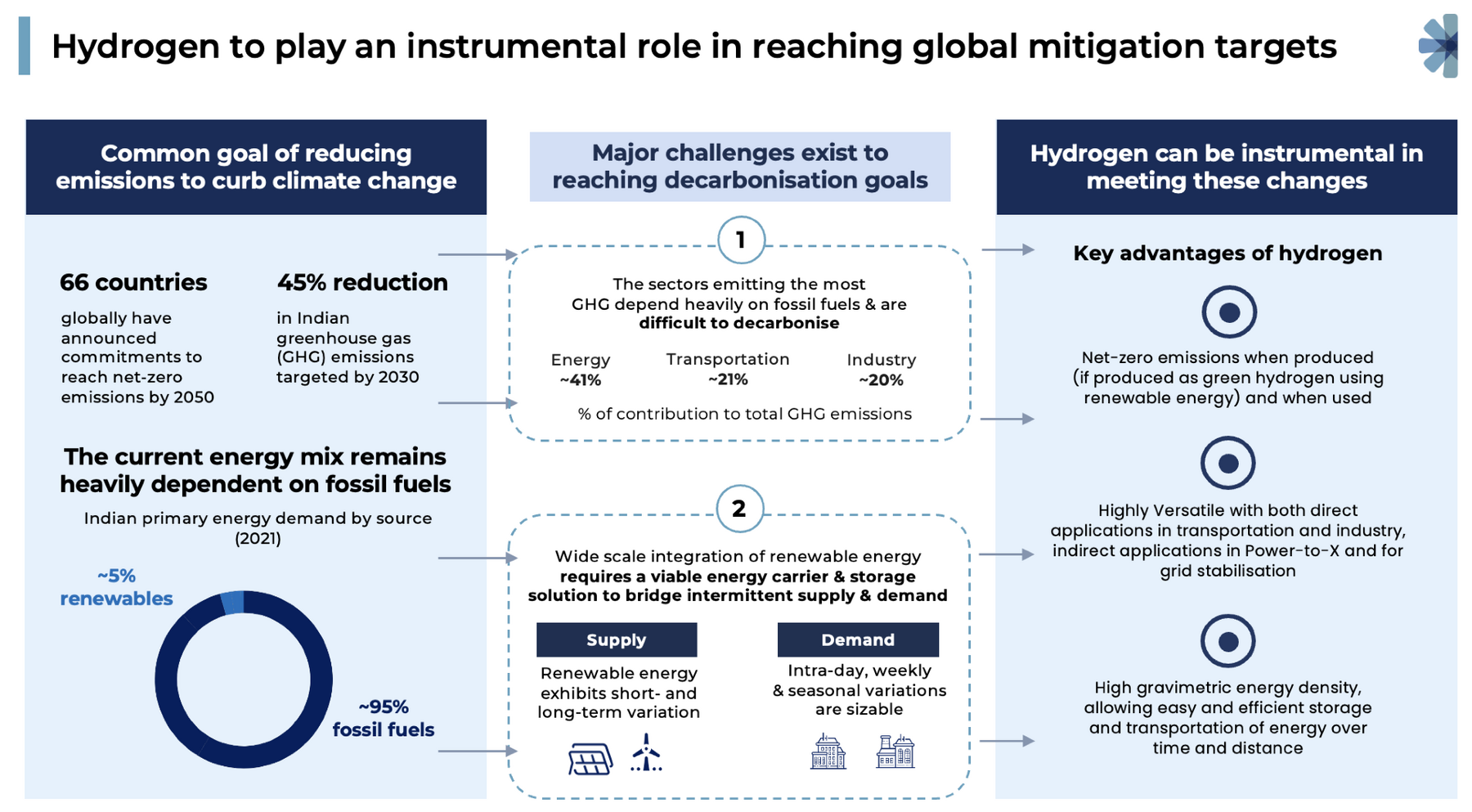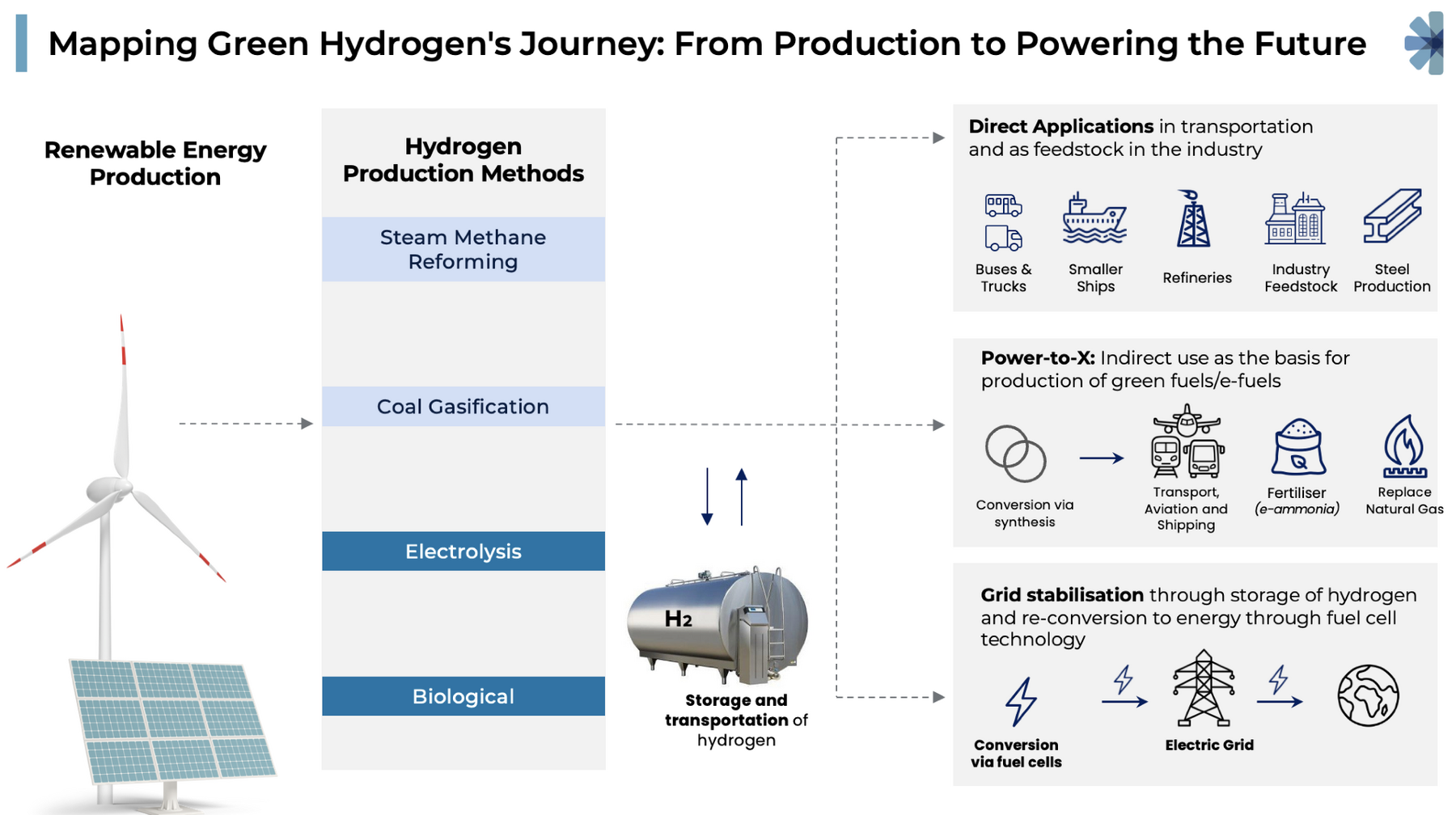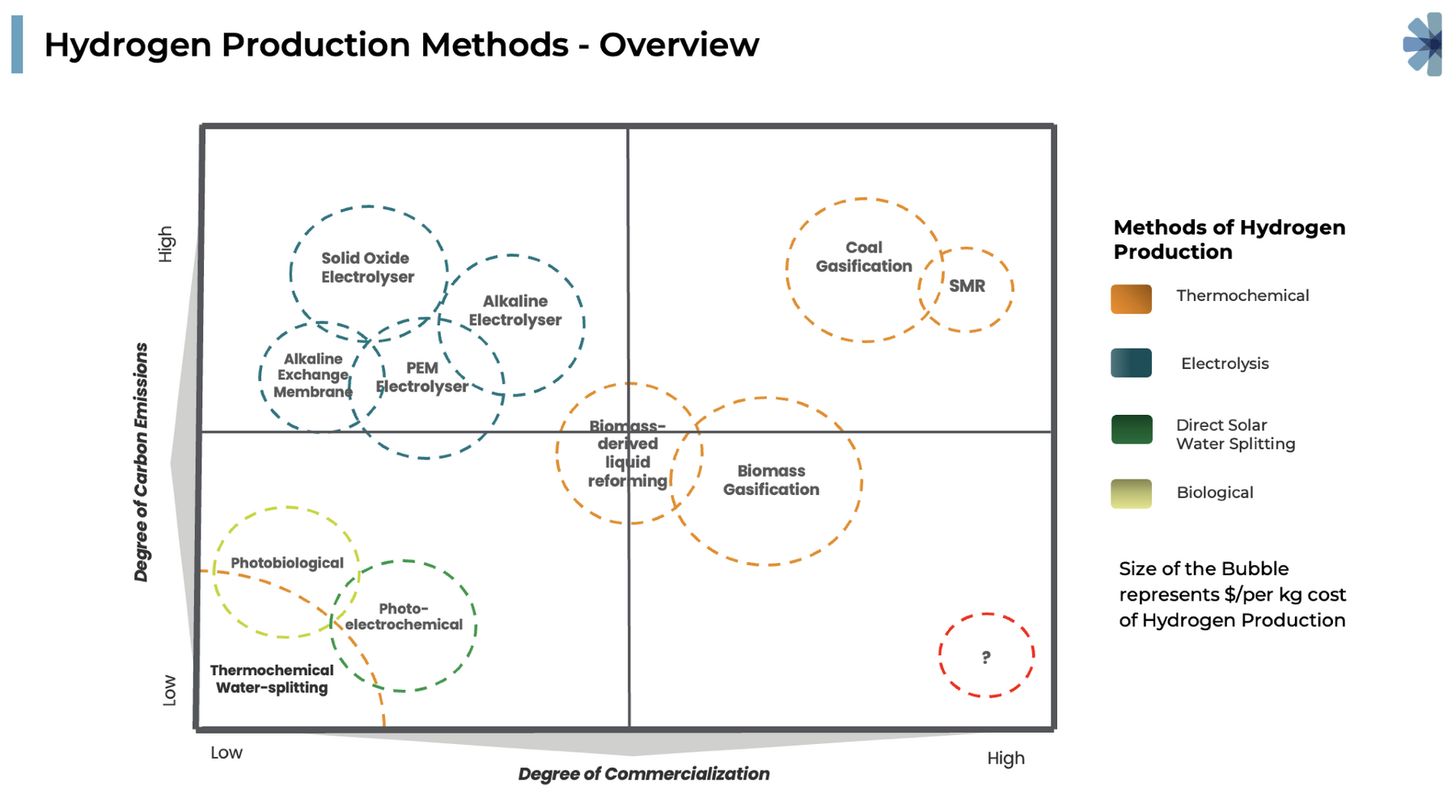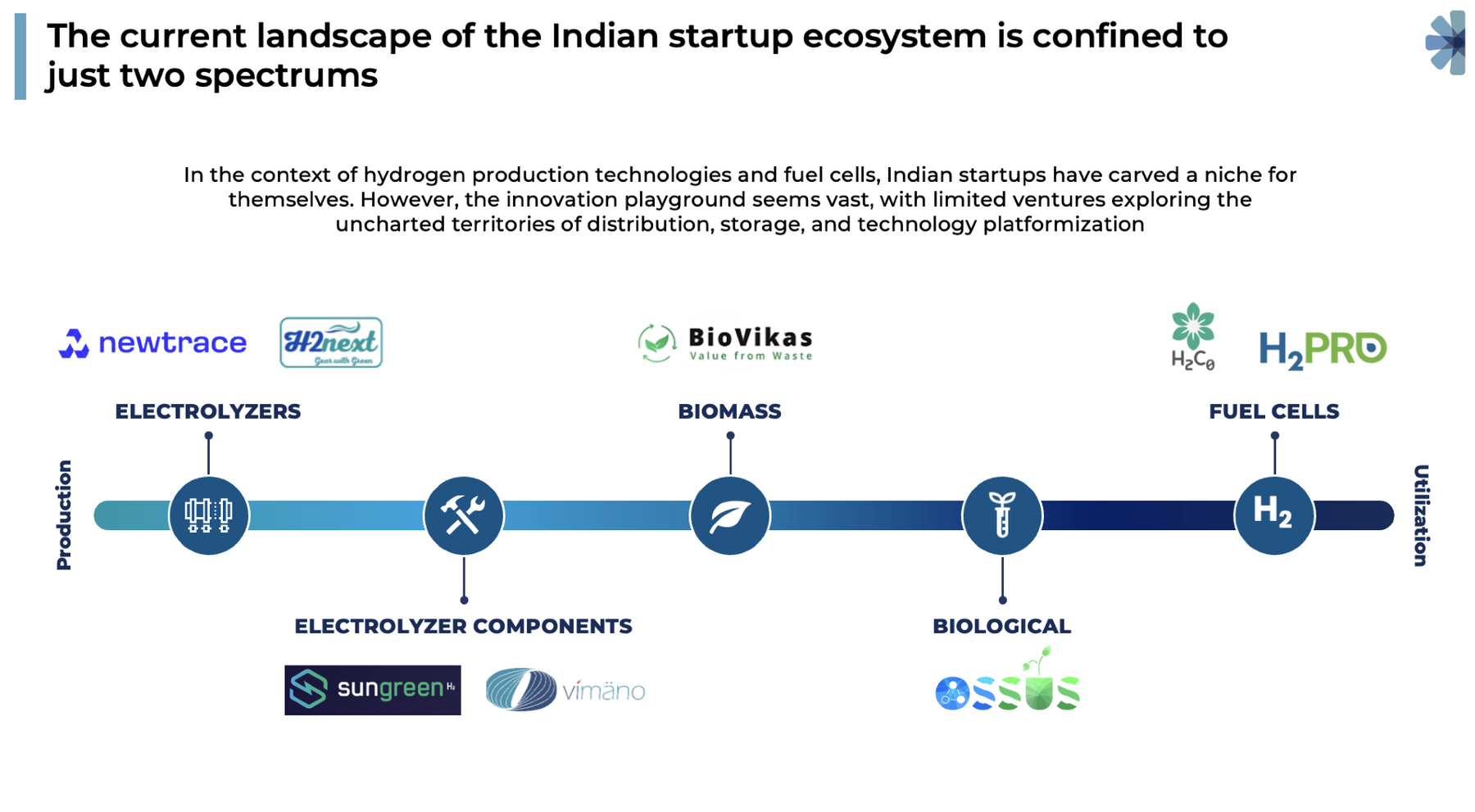Green Hydrogen Bluprint discusses the role of green hydrogen in achieving net-zero emissions, highlighting its importance in the renewable energy transition. The report covers the challenges of integrating renewable energy, emphasizing green hydrogen as a key element for reducing CO2 emissions in energy-intensive sectors. It also touches upon the global and Indian context, including the market potential, challenges, and innovations in green hydrogen production and applications.
Resource
- Green Hydrogen Bluprint Summary pdf, 4 MB
'Hydrogen…, given enough time, turns into people.' This statement beautifully captures the essence of hydrogen's journey from being the simplest element in the universe to becoming a fundamental part of life as we know it. Now, as we stand on the brink of a new era, hydrogen is poised to transform our world once again, this time through the lens of green energy.
Let's try to quantify our world in a few numbers, kind of like if you were trying to explain Minecraft to an alien. So, imagine you have a really, really big shopping list for the planet. It includes:
- 8 billion tonnes of coal, which, fun fact, produces about 22.88 billion tonnes of CO2. That's like if every person on Earth owned about 3 cars and they all decided to take a road trip to the Moon.
- 5 billion tonnes of oil, resulting in 15.75 billion tonnes of CO2. It's as if the Earth was ac chain smoker blowing out CO2 smoke rings.
- 1.9 billion tonnes of steel, creating 3.42 billion tonnes of CO2. Picture building a skyscraper out of steel but, you know, 1.9 billion times over.
- 450 million tonnes of LNG (Liquefied Natural Gas), adding 1.24 billion tonnes of CO2 to our atmosphere. It's like Earth's making a giant CO2 cocktail, and LNG is its favorite mixer.
- 250 million tonnes of ammonia, surprisingly only responsible for 0.47 billion tonnes of CO2. That's the Earth's way of saying, 'I can be a little less harsh sometimes.'
- And let's not forget the 30-40 million tonnes of Green Hydrogen we'll need by the next decade. It's like the new kid on the block who's promising to clean up after the Earth's wild energy party.
But to begin with why the sudden craze for green hydrogen, there are no moonwalk breakthroughs that have happened in the past 3-4 years. It’s just that the costs of renewables has come down and hence the notion of replacing gas route with electricity in the energy equation has the taken the front seat. Reduction in costs of renewable energy, cost of electrolysers coming down by as much as 60% in the last 3 years and an overall system efficiency- ecosystem getting more ripe and efficient has led us to believing in the role of hydrogen to decarbonise our economies- ~90% of the required carbon reductions are estimated to come from the use of green hydrogen!
And while the energy mix is rapidly transitioning to a renewables base- wide scale integration of renewable energy requires a viable energy carrier and storage solution to bridge intermittent supply and demand gap- and thus, hydrogen’s versatility of production and its plethora of direct and indirect use-cases makes it the element of the next coming decades.
Each hue of hydrogen represents a unique method of generation. Grey Hydrogen is the old guard, produced via Steam Methane Reforming (SMR), economically priced but loaded with high carbon emissions. Black/Brown Hydrogen follow suit, while marginally pricier, they unfortunately boast even heftier CO2 numbers. Blue Hydrogen, also birthed from natural gas but with carbon capture technology, slightly elevating its cost but reducing its environmental footprint. Pink/Purple Hydrogen- generated from nuclear power with an electrolytic twist, offers a promising but cost-undefined pathway. And then, Green Hydrogen, a vision in renewables- commands a premium for its purity, but with negligible emissions.
And what exactly do we mean by Green Hydrogen- It's hydrogen produced using renewable energy sources like wind, solar, or hydroelectric power- Its production process being as pure as nature intended.
This is the hydrogen value chain we need to know about. It starts with the production of renewable energy, which in turn serves as the feedstock to the various hydrogen production techniques such as electrolysis to even upcoming biological ways of production. The disparity of timing and place of production and consumption of H is solved by storage and transportation layer, which, unlike fossil fuels, is a bit trickier here. The final consumption happens either in a direct form or in an indirect form via synthesis.
These are the different hydrogen production techniques mapped out on a single plane. Where degree of carbon emissions and degree of commercialisation almost always have presented a trade off, now we’re looking for a solution that falls in the bottom right quadrant of the matrix which can also offer cost parity. The real question is how long before we discover this solution or the existing ones move to fill up that whitespace.
Hydrogen’s lower energy density in its gaseous form as compared to the other conventional fuels, makes storage a tricky problem to solve for. It can be either stored in a gaseous, liquid or a chemical form. Most hydrogen is predicted to be ****produced and consumed at the same location
An industry that looks like a measly $8bn opportunity in 2030 is expected to be the beast by 2050 with a $340bn predicted outcome. And while the big boys like Adani, Ambani etc have already started to commit in the range of hundreds of billions of dollars in the upcoming two decades, most of the groundbreaking innovation is still expected to come from the Indian startup ecosystem.
And the biggest markets that seem to be elecytrolyser tech stacks, biohydrogen production and fuel cells, still have a lot to prove before they claim their piece of the pie.
And here are a few heroes of the ecosystem mapped across their tech stacks in the Indian startup landscape, addressing the country’s unique challenges and opportunities.
As we dive deeper into this space, we’re excited to share insights, learnings, and collaborations. The journey has just begun, and the potential is immense. Let's harness the power of green hydrogen together!
To read the full Green Hydrogen BLUprint report, click here.



